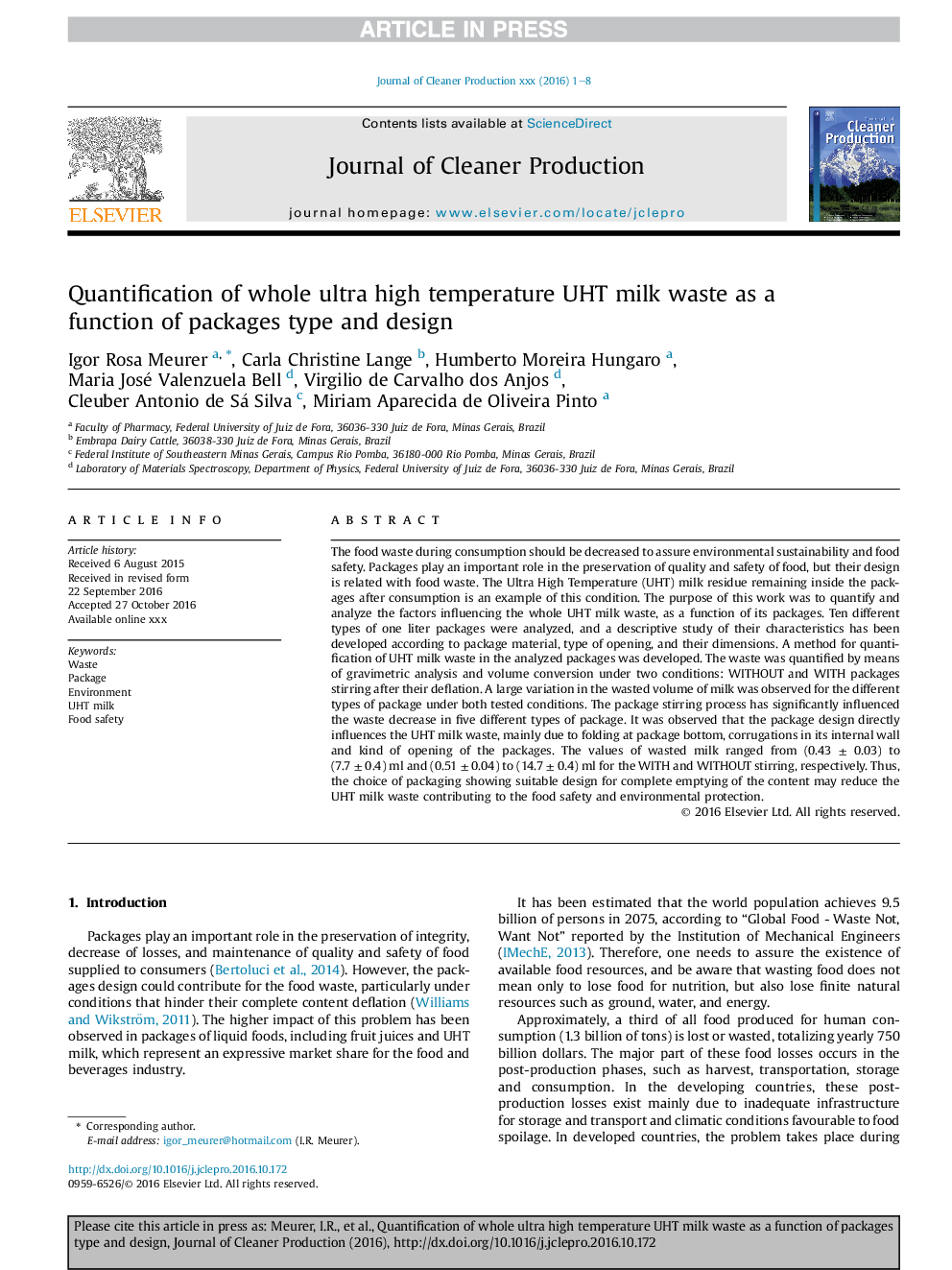| Article ID | Journal | Published Year | Pages | File Type |
|---|---|---|---|---|
| 5479659 | Journal of Cleaner Production | 2017 | 8 Pages |
Abstract
The food waste during consumption should be decreased to assure environmental sustainability and food safety. Packages play an important role in the preservation of quality and safety of food, but their design is related with food waste. The Ultra High Temperature (UHT) milk residue remaining inside the packages after consumption is an example of this condition. The purpose of this work was to quantify and analyze the factors influencing the whole UHT milk waste, as a function of its packages. Ten different types of one liter packages were analyzed, and a descriptive study of their characteristics has been developed according to package material, type of opening, and their dimensions. A method for quantification of UHT milk waste in the analyzed packages was developed. The waste was quantified by means of gravimetric analysis and volume conversion under two conditions: WITHOUT and WITH packages stirring after their deflation. A large variation in the wasted volume of milk was observed for the different types of package under both tested conditions. The package stirring process has significantly influenced the waste decrease in five different types of package. It was observed that the package design directly influences the UHT milk waste, mainly due to folding at package bottom, corrugations in its internal wall and kind of opening of the packages. The values of wasted milk ranged from (0.43 ± 0.03) to (7.7 ± 0.4) ml and (0.51 ± 0.04) to (14.7 ± 0.4) ml for the WITH and WITHOUT stirring, respectively. Thus, the choice of packaging showing suitable design for complete emptying of the content may reduce the UHT milk waste contributing to the food safety and environmental protection.
Related Topics
Physical Sciences and Engineering
Energy
Renewable Energy, Sustainability and the Environment
Authors
Igor Rosa Meurer, Carla Christine Lange, Humberto Moreira Hungaro, Maria José Valenzuela Bell, Virgilio de Carvalho dos Anjos, Cleuber Antonio de Sá Silva, Miriam Aparecida de Oliveira Pinto,
